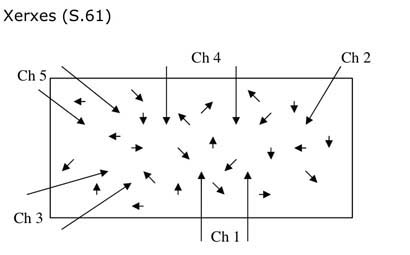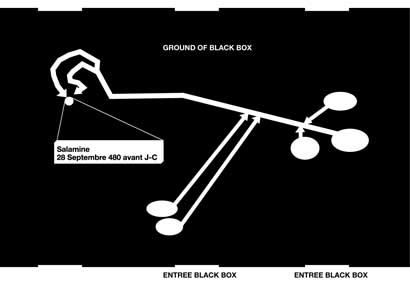| theatercombinat | die perser/les perses aeschylus/müller/witzmann - 3 performances with 3 concepts in 3 cities (geneva, vienna, brunswick), 3 spaces und 2 languages (german/french) sprache/language/langue: deutsch, english, français |
ergreifendes sprechen, christine standfest die perser, brunswick tragödienproduzenten |
aeschylus' tragedy «the persians» (472 BC) contains 1075 verses. 500 of them are by the chorus as the main character. the stagings in vienna, geneva and brunswick adopt this fundamental idea of the oldest political-aesthetic praxis of our western culture: a chorus of citizens constitutes the centre of these productions. a practical process of appropriation of language and theatre. a singular working process, at the same time a discussion about theatre and modes of democracy. together, the citizens entered the stage of the brunswick national theatre, occupied the black box of the théâtre du grütli in geneva or gathered in a 200 m subterranean tunnel under vienna's inner city. the public became part of the chorus-body to directly experience the impact of the spatial choreography and the force-field of the chorus. |
  |
die perser (brunswick 2008) les perses (geneva 2006) |
«die perser» / «les perses» |
the speaking followed, in french, as well as in german a distinct speech-score, developed by claudia bosse. on each occasion, the chorus of «the persians» was a chorus of the respective city. gerald singer, christine standfest and doris uhlich were the protagonists in geneva, vienna and partly in brunswick. for each city a particular working model was developed, for every space specific space installations and choreographies were developed. vienna: tragic chorus of the 12, 3 protagonists and 60 spectators. a 200 m subterranean void in the viennese underground between stations neubaugasse und zieglergasse. geneva: chorus of 500 with 180 members, 10 chorus leaders, 4 protagonists and 100 spectators in the black box of théâtre du grütli. brunswick: chorus of 500 with 340 members, 10 chorus leaders, 4 protagonists and 230 spectators on the stage of the national theatre brunswick. |
«the persians» (472 BC) is the oldest in extenso preserved tragedy, a document of the rising democracy in athens. the expansion campaign of xerxes, the persian emperor, fails after the destruction of athens at the battle of salamis (480 BC). the greeks outwit the numerically superior persian fleet, that sinks into the sea. aeschylus writes from the perspective of the enemy, thus constructing the image of the hostile political system: the barbarian persians, the military power, the tyrannical regime. the narration of the campaign and the battle in terms of a predramatic theatre text with chorus and 4 parts for protagonists is the first preserved medialisation of history and war in theatre. |
|
www.theatercombinat.com theatrale produktion und rezeption
